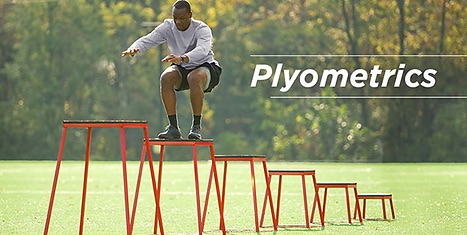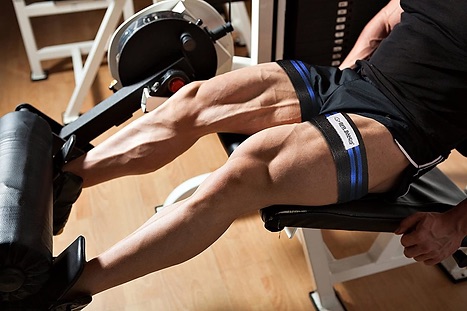High performance Lab perth
ENHANCING MUSCULAR STRENGTH & POWER: EXPLORING KEY TRAINING CONSIDERATIONS
High performance Lab perth
As an accredited exercise sports scientist and S&C coach, understanding the various training considerations for improving muscular strength and power is essential for designing effective training programs. In this blog post, I will delve into key considerations that can optimise your training outcomes. Each consideration will be explored in detail, supported by references and citations from scientific literature for which you can refer to if you wish to see more from the study.
1. Bodyweight Exercise:
Bodyweight exercises offer numerous benefits for developing strength and power. They can enhance neuromuscular coordination, improve movement patterns, and increase relative strength. Incorporating exercises such as push-ups, pull-ups, and bodyweight squats can be an effective way to improve overall muscular strength and power (Behm et al., 2016).
2. Machine vs. Free Weight Training:
The choice between machine and free weight training depends on the specific goals and individual characteristics. Free weights, such as barbells and dumbbells, often require greater stabilisation and activate more muscle groups, leading to better functional adaptations. However, machines can be beneficial for isolating specific muscles or accommodating individuals with limited stability or strength (Campos et al., 2002).
3. Training with Weightlifting Movements:
Weightlifting movements, such as the snatch and clean and jerk, are highly effective for improving power and explosiveness. These movements involve high-velocity contractions, engaging multiple muscle groups, and stimulating adaptations in the central nervous system. Incorporating variations of weightlifting movements can enhance power development and functional performance (Hori et al., 2020).
4. Plyometric Training:
Plyometric exercises involve rapid stretching and contracting of muscles, aiming to improve power and explosive strength. Activities like depth jumps, bounding, pogo’s and medicine ball throws stimulate the stretch-shortening cycle (SSC), enhancing muscle-tendon complex properties and neuromuscular coordination (Markovic, 2007).

Proper progression and technique are crucial to minimise injury risk.
Click on the link above for further analysis and deep dive down the rabbit hole on the SSC.
5. Eccentric Training:
Eccentric training focuses on the controlled lengthening of muscles under load. This type of training has been shown to increase strength and power, as well as improve muscle architecture and tendon properties. Utilising eccentric exercises, such as eccentric squats or Nordic hamstring curls, can lead to significant gains in muscular performance (Roig et al., 2009).
6. Complex Training & Strength-Power Potentiation Complexes:
Complex training involves pairing a strength exercise with a power exercise in a single session to enhance power output. This approach utilises the phenomenon of post-activation potentiation (PAP), which involves the acute increase in muscle performance following a heavy resistance exercise. Incorporating strength-power potentiation complexes, such as a heavy back squat followed by a vertical jump, can optimise power development (Gourgoulis et al., 2003).
7. Post-Activation Potentiation:
Post-activation potentiation (PAP) occurs when a maximal or near-maximal contraction is followed by a subsequent explosive movement. This phenomenon enhances neural drive and muscle contractile properties, leading to increased power output. By strategically integrating heavy resistance exercises before explosive movements, athletes can take advantage of PAP to improve muscular strength and power (Tillin et al., 2017).
8. Bilateral/Unilateral Movement – Variable Resistance Training:
Incorporating both bilateral (two limbs) and unilateral (one limb) exercises in training programs can provide diverse stimuli and enhance muscular strength and power. Variable resistance training, such as using elastic bands or chains, can add accommodating resistance throughout the full range of motion, increasing muscle activation and promoting better force development (Winwood et al., 2016).
9. Kettlebell/Ballistic vs. Non-Ballistic Training:
Kettlebell and ballistic training involve explosive, dynamic movements that utilise momentum to generate power. These exercises, such as kettlebell swings and snatches, can enhance muscular power, speed, and coordination (Manocchia et al., 2017). On the other hand, non-ballistic training focuses on controlled, deliberate movements without momentum, allowing for greater emphasis on strength development. Incorporating a combination of kettlebell/ballistic and non-ballistic exercises can provide a comprehensive approach to improving muscular strength and power.
10. Loading Consideration:
The appropriate loading parameters, such as intensity, volume, and rest intervals, play a crucial role in optimising muscular strength and power gains. Heavy loads (≥85% 1RM) are typically used for strength development, while moderate loads (65-85% 1RM) with higher velocities are effective for power development (Suchomel et al., 2018). Manipulating volume and rest intervals based on the desired adaptations and individual characteristics is important for achieving optimal results.
11. Progressive Overload:
Progressive overload is a fundamental principle for improving muscular strength and power. Gradually increasing the intensity, volume, or complexity of the training stimulus stimulates adaptations in the muscles and neuromuscular system. This principle ensures continued progress and can be achieved through various methods such as increasing resistance, repetitions, or training frequency (Schoenfeld, 2010).
12. Periodisation:
Periodisation involves systematically planning training cycles with different phases to optimise performance and minimise the risk of overtraining. Implementing periodisation strategies, such as linear, undulating, or block periodisation, allows for targeted improvements in muscular strength and power by manipulating training variables over time (Issurin, 2010).
13. Velocity-Based Training (VBT):
VBT utilises technology, such as linear position transducers or accelerometers, to measure movement velocity during resistance exercises. By monitoring velocity, athletes and coaches can precisely prescribe loads and adjust training intensity to optimise power development (González-Badillo et al., 2018). VBT use velocity zones to help establish loads or assist in the identification of fatigue onset. This is a great training method which has been around for years but is only starting to become freely available due to new accelerometers hitting the market for individuals and small businesses at a fraction of cost of a complete laboratory set up.

14. Neuromuscular Electrical Stimulation (NMES):
NMES involves the application of electrical impulses to activate muscle contractions. It can be used as an adjunct to traditional training methods to enhance strength and power gains, especially in rehabilitation settings or for specific muscle groups (Deley et al., 2019).

15. Blood Flow Restriction Training (BFRT):
BFRT involves applying a pressure cuff or band to the proximal part of a limb to restrict blood flow during exercise.
This technique has been shown to improve muscular strength and power, even with low-intensity resistance training, by creating a hypoxic environment and increasing metabolic stress (Loenneke et al., 2019).
Conclusion:
Improving muscular strength and power requires a multifaceted approach, considering various training considerations. This blog post has explored 10 key considerations, ranging from bodyweight exercises to loading parameters, supported by scientific literature. Incorporating these considerations into training programs can help sports scientists and athletes optimise their training outcomes and enhance performance.
References:
- Behm, D. G., et al. (2016). The use of instability to train the core musculature. Applied Physiology, Nutrition, and Metabolism, 41(11), 1155-1157.
- Campos, G. E., et al. (2002). Muscular adaptations in response to three different resistance-training regimens: specificity of repetition maximum training zones. European Journal of Applied Physiology, 88(1-2), 50-60.
- Deley, G., et al. (2019). Effect of electromyostimulation training on muscle strength and sports performance. Strength and Conditioning Journal, 41(5), 1-10.
- González-Badillo, J. J., et al. (2018). Velocity-based training: Foundations, evidence, and practical applications. Routledge.
- Gourgoulis, V., et al. (2003). Effect of a submaximal half-squats warm-up program on vertical jumping ability. Journal of Strength and Conditioning Research, 17(2), 342-344.
- Hori, N., et al. (2020). Effects of weightlifting movements on jumping performance in collegiate basketball players. Sports, 8(11), 151.
- Issurin, V. (2010). New horizons for the methodology and physiology of training periodization. Sports Medicine, 40(3), 189-206.
- Loenneke, J. P., et al. (2019). Blood flow restriction training: Implementation into clinical practice. International Journal of Sports Physical Therapy, 14(5), 802-813.
- Manocchia, P., et al. (2017). Kettlebell training for musculoskeletal and cardiovascular health: a randomized controlled trial. Journal of Strength and Conditioning Research, 31(1), 36-45.
- Markovic, G. (2007). Does plyometric training improve vertical jump height? A meta-analytical review. British Journal of Sports Medicine, 41(6), 349-355.
- Roig, M., et al. (2009). The effects of eccentric versus concentric resistance training on muscle strength and mass in healthy adults: a systematic review with meta-analysis. British Journal of Sports Medicine, 43(8), 556-568.
- Schoenfeld, B. J. (2010). The mechanisms of muscle hypertrophy and their application to resistance training. Journal of Strength and Conditioning Research, 24(10), 2857-2872.
- Suchomel, T. J., et al. (2018). The importance of muscular strength in athletic performance. Sports Medicine, 48(4), 765-785
- Tillin, N. A., et al. (2017). The effects of postactivation potentiation on sprint and jump performance of male academy soccer players. Journal of Strength and Conditioning Research, 31(4), 954-962.
- Winwood, P. W., et al. (2016). The acute potentiating effects of back squats on athlete performance. Journal of Strength and Conditioning Research, 30(4), 964-976.

